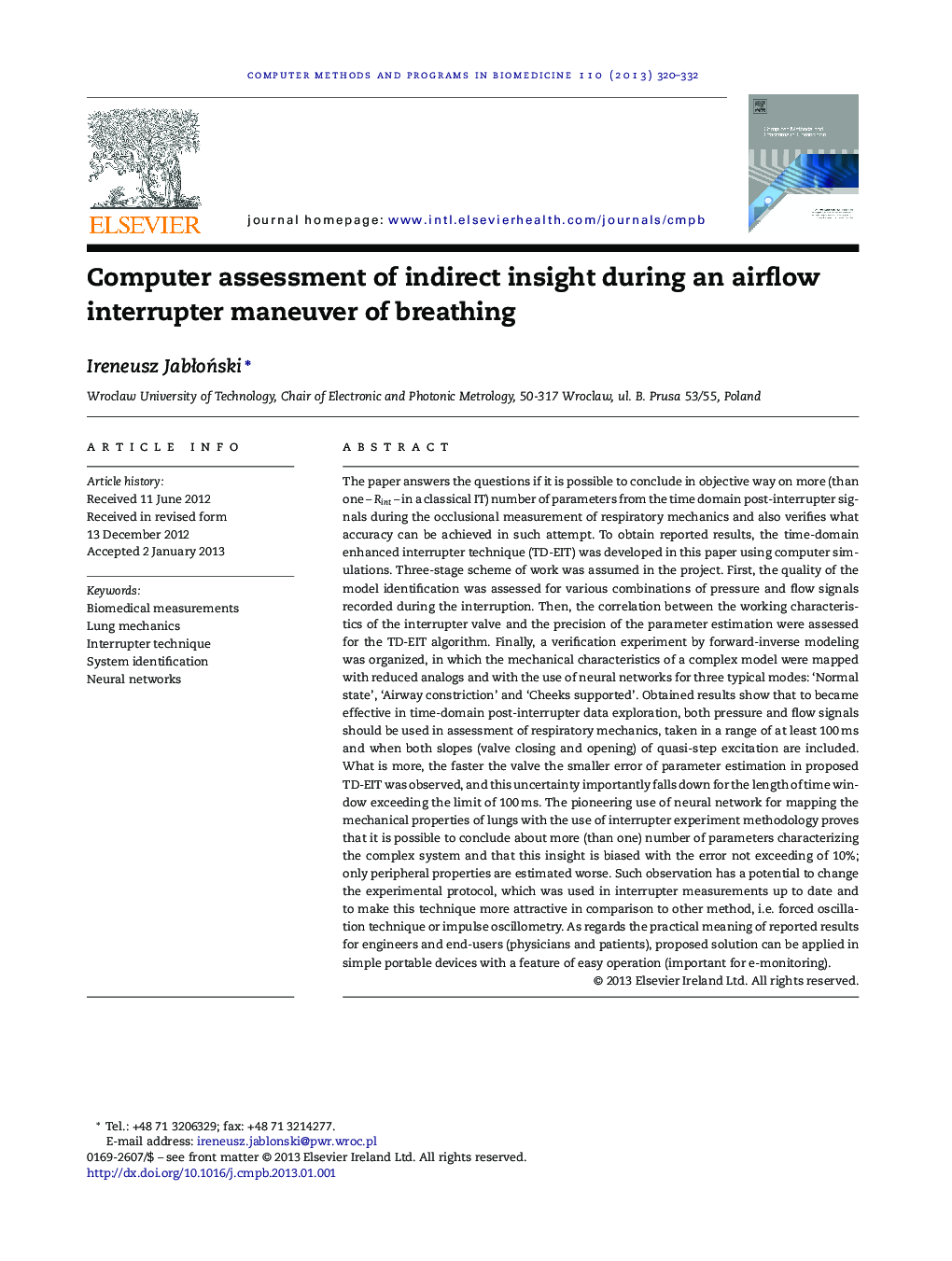| Article ID | Journal | Published Year | Pages | File Type |
|---|---|---|---|---|
| 6891565 | Computer Methods and Programs in Biomedicine | 2013 | 13 Pages |
Abstract
The paper answers the questions if it is possible to conclude in objective way on more (than one - Rint - in a classical IT) number of parameters from the time domain post-interrupter signals during the occlusional measurement of respiratory mechanics and also verifies what accuracy can be achieved in such attempt. To obtain reported results, the time-domain enhanced interrupter technique (TD-EIT) was developed in this paper using computer simulations. Three-stage scheme of work was assumed in the project. First, the quality of the model identification was assessed for various combinations of pressure and flow signals recorded during the interruption. Then, the correlation between the working characteristics of the interrupter valve and the precision of the parameter estimation were assessed for the TD-EIT algorithm. Finally, a verification experiment by forward-inverse modeling was organized, in which the mechanical characteristics of a complex model were mapped with reduced analogs and with the use of neural networks for three typical modes: 'Normal state', 'Airway constriction' and 'Cheeks supported'. Obtained results show that to became effective in time-domain post-interrupter data exploration, both pressure and flow signals should be used in assessment of respiratory mechanics, taken in a range of at least 100Â ms and when both slopes (valve closing and opening) of quasi-step excitation are included. What is more, the faster the valve the smaller error of parameter estimation in proposed TD-EIT was observed, and this uncertainty importantly falls down for the length of time window exceeding the limit of 100Â ms. The pioneering use of neural network for mapping the mechanical properties of lungs with the use of interrupter experiment methodology proves that it is possible to conclude about more (than one) number of parameters characterizing the complex system and that this insight is biased with the error not exceeding of 10%; only peripheral properties are estimated worse. Such observation has a potential to change the experimental protocol, which was used in interrupter measurements up to date and to make this technique more attractive in comparison to other method, i.e. forced oscillation technique or impulse oscillometry. As regards the practical meaning of reported results for engineers and end-users (physicians and patients), proposed solution can be applied in simple portable devices with a feature of easy operation (important for e-monitoring).
Keywords
Related Topics
Physical Sciences and Engineering
Computer Science
Computer Science (General)
Authors
Ireneusz JabÅoÅski,
